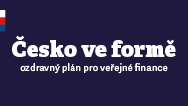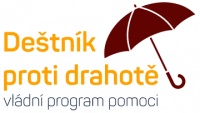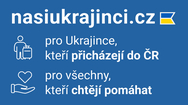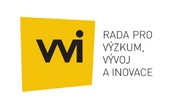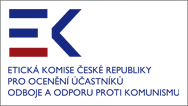Finanční instrumenty a programy
2. 12. 2016 10:37
Cooperation and funding possibilities
1) EU funding Instruments and Programmes
European Structural and Investment funds (ESIF)
Five main funds (ERDF, CF, ESF, EAFRD, EMFF) work together to support economic development across all EU countries, in line with the objectives of the Europe 2020 strategy.
ERDF focuses its investments on several key priority areas: innovation and research; the digital agenda; support for small and medium-sized enterprises (SMEs); the low-carbon economy.
CF is aimed at Member States whose GNI per capita is less than 90% of EU average. It aims to reduce economic and social disparities and to promote sustainable development. For 2014-2020 period, the CF concerns Bulgaria, Croatia, Cyprus, the Czech Republic, Estonia, Greece, Hungary, Latvia, Lithuania, Malta, Poland, Portugal, Romania, Slovakia and Slovenia.
ESF invests in people, with a focus on improving employment and education opportunities across the European Union. It also aims to improve the situation of the most vulnerable people at risk of poverty. The ESF investments cover all EU regions. For the 2014-2020 period, the ESF will focus on four of the cohesion policy's thematic objectives: promoting employment and supporting labour mobility; promoting social inclusion and combating poverty; investing in education, skills and lifelong learning; enhancing institutional capacity and an efficient public administration.
EAFRD is the EU instrument for funding the EU’s rural development policy, which helps the rural areas of the EU to meet the wide range of challenges and opportunities that face them in the 21st century – economic, environmental and social. Member States build their programs based on at least 4 of the 6 common EU priorities: fostering knowledge transfer and innovation in agriculture, forestry and rural areas; enhancing the viability / competitiveness of all types of agriculture, and promoting innovative farm technologies and sustainable forest management; promoting food chain organisation, animal welfare and risk management in agriculture; restoring, preserving and enhancing ecosystems related to agriculture and forestry; promoting resource efficiency and supporting the shift toward a low-carbon and climate-resilient economy in the agriculture, food and forestry sectors; promoting social inclusion, poverty reduction and economic development in rural areas.
EMFF is the EU instrument for funding the Common Fisheries Policy, which is a set of rules for managing European fishing fleets and for conserving fish stocks. Designed to manage a common resource, Common Fisheries Policy gives all European fishing fleets equal access to EU waters and fishing grounds and allows fishermen to compete fairly. EMFF is largely managed by the EU Member States. The fund is used for: Reducing impact of fishing on the marine environment, more market tools for professionals and consumers; joint stewardship of protected areas and Natura 2000 sites; special support to small-scale fishermen.jakož i ke společné správě chráněných oblastí Natura 2000 a zvláštní podpoře drobných rybářů.
Other financial instruments and programmes
Horizon 2020 is the EU framework programme for research and innovation. I tis is the biggest EU Research and Innovation programme ever with nearly €80 billion of funding available over 7 years (2014 to 2020). Programme foces on three key areas: excellent science, industrial leadership and societal challenges. The goal is to ensure Europe produces world-class science and technology that drives economic growth.
COSME is programme for the competitiveness of enterprises and small and medium-sized enterprises. With a budget of EUR 2.3 billion for the period 2014-2020, COSME will focus its financing on projects strengthening the competitiveness and sustainability of the Union’s enterprises, particularly SMEs.
The aim of Erasmus+ is to contribute to the Europe 2020 strategy for growth, jobs, social equity and inclusion, as well as the aims of ET2020, the EU's strategic framework for education and training. Erasmus+ also aims to promote the sustainable development of its partners in the field of higher education, and contribute to achieving the objectives of the EU Youth Strategy.
For funding opportunities under Erasmus+ please consult the Programme Guide.
Kreativní Evropa („Tvůrčí Evropa“)
By specifically targeting the needs of the cultural and creative sectors aiming to operate beyond national borders, and with a strong link to the promotion of cultural and linguistic diversity, the programme will complement other European Union (EU) programmes such as structural fund support for investment in the cultural and creative sectors, heritage restoration, cultural infrastructure and services, digitisation funds for cultural heritage and the enlargement and external relations instruments. Member States support numerous cultural initiatives many of which fall under state aid rules.
Aim is to accelerate investment in the field of trans-European networks and to leverage funding from both the public and the private sectors, while increasing legal certainty and respecting the principle of technological neutrality.
The CEF Programme is divided into three sectors
Investment Plan for Europe- focuses on removing obstacles to investment, providing visibility and technical assistance to investment projects and making smarter use of new and existing financial resources.
- EFSI is one of the three pillars of the Investment Plan for Europe that aims to revive investment in strategic projects around Europe to ensure that money reaches the real economy.
Fond Marguerite is an independent European fund wich focuses on long term institutional investors to finance projects aimed at achieving major objectives and strategic projects of the European Union in the areas of transport, energy and climate, as well as energy renewable.
LIFE program focuses on variety of environmental and nature themes. The LIFE Programme is financing projects through grants or financial instruments (loans or investments). LIFE financial instruments: Natural Capital Financing Facility (NCFF) or Private Finance for Energy Efficiency instruments (PF4EE).
IPA program is an instrument focuses on candidate countries and potential candidate countries. IPA is made up of five different components: assistance for transition and institution building; cross-border cooperation, regional development, human resources, rural development.
The European investment advisory hub (HUB)
The main purpose of the advisory hub is to provide advice to investors, project promoters and public managing authorities on project identification, development and preparation. The advisory hub provides its services at both EU and local level.
The European Investment Project Portal
The European Investment Project Portal (EIPP) was established by the European Commission in order to provide greater transparency about EU investment opportunities. It is part of the Investment Plan for Europe and is designed to support investment in the real economy.
The Portal offers EU based private and public project promoters a convenient way to boost the visibility of their investment projects by simply filling and submitting a project form. EIPP will show-case these projects in a structured user-friendly way and will thus attract investors worldwide, who will be able to reinforce their own pipelines with more European projects.
EUSDR Strategic Projects
EUSDR strategic projects are projects with high impact and visibility for the EUSDR. As such they could demonstrate the progress achieved in implementing the EUSDR and could strengthen and improve the communication on the EUSDR strategic focus. These projects could also serve as pilot examples for desired future changes
Aims:
- contributing to stronger and clearer strategic focus of the activities and efforts undertaken within the EUSDR Priority Areas as well as fleshing out the ambition and the direction an EUSDR PA would have in certain policy area;
- supporting and further encouraging joint cooperation between EUSDR states and/or regions, which are strategically important for the Danube region;
- establishing the ground to further consider the strategic projects/processes within the revision process of EUSDR targets, actions, milestones and roadmaps
Scope and criteria for EUSDR strategic projects
In terms of structure, a EUSDR strategic project can be:
1) Single project, contributing to a priority area;
2) Group of projects, contributing to a priority area;
3) Process, contributing to a priority area;
In terms of scope and readiness, a EUSDR strategic project can be:
4)Preparatory project: project for preparing future project
5) Investment project: project consisting of construction activities, supply activities or consultancy activities or any combination between these activities as needed
6) Processes or other projects for developing and establishing key solutions, new methodologies, new transnational cooperation and/or networking mechanisms aiming at influencing policy- and decision-making in a policy area
7) A project/process is in planning/preparatory stage in all cases
